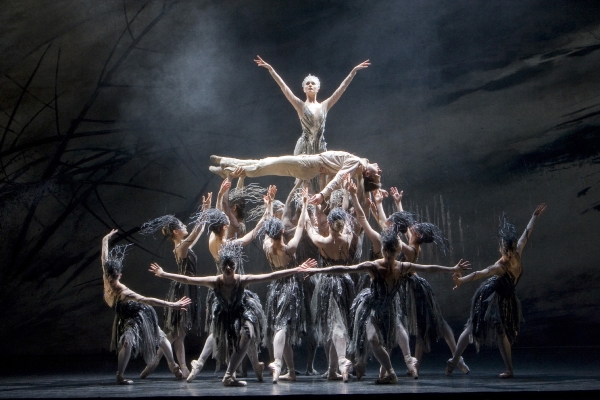
This night began as a night at the ballet should, with that rare thing – the sound of a live orchestra tuning-up over expectant audience hubbub. And then suddenly, it was curtain-up into a transformed world of grace, drama and beauty, as music and motion, staging and costume merged into an astonishing and indescribable whole. And who better to produce that alchemy than The Birmingham Royal Ballet accompanied by the RB Sinfonia?
A triple bill read Shakespeare 2 – Mythology 1, with Wink: Jessica Lang’s choreographed reflections upon five of The Sonnets, The Moor’s Pavane: José Limon’s Variations on the Theme of Othello, and Arcadia: Ruth Brill’s exploration of the life of the god Pan.
Wink takes its title from Sonnet 43’s references to darkness and light, a theme exploited in the stage set of swivelling black and white panels, served by ingenious lighting. Each poem is read by the artless and innocent recorded voice of a teenager – a strange choice for such great and complex imagery.
Jakub Ciupinski’s music however, varying choppy tense themes with classically romantic ones for solo string instruments, catches the Bard’s moods of love, abandonment and approaching death, and inspired exquisite dancing in ever increasing group sizes. It is centred on the figure of the poet, in the imposing person of – I think as roles were not identified, Brandon Lawrence. It is though a flowing ensemble piece, with an exceptional sequence for male dancers.
Where Pan’s Arcadia is situated was not specified, but it seemed to be a place of jungle scenery, Middle-Eastern music and a touch of early 1950’s musicals, complete with delightful rainbow costumes. I’d go there in a flash if I knew the exact location.
It sprang from saxophonist/composer John Harle’s music – and he was the star soloist in the orchestra pit. At the hub was Brandon Lawrence’s half-man, half-beast Pan, a huge and ominous outsider mesmerising with the contained power of animalistic arm movements. A bravura performance as, charmed by the lithe elegance of moon goddess Celine Gittings, he reclaimed his human side to dance in happy unison with his followers.
As these two productions displayed, ballet has refreshed itself over decades with borrowings from modern dance. The Moor’s Pavane from 1949 was a seminal step along the way. Perhaps viewed with modern eyes it attempts too much in its short span. It not only relates the story of the play, but also attempts to comment upon envy and jealousy to modern times.
It is however a sumptuous feast, beautifully costumed in period, and set within the rigid framework of the dancing of a pavane: a metaphor for the rules of the stifling society, in which passion and hatred are played out.
The courtly perfection of the dancing of Tyrone Singleton as Othello, Delia Mathews as Desdemona, Iain Mackay as Iago and Samara Downs as Emilia was breath taking, as was Iago’s snake like, leg curling attempts to poison Othello’ mind, as the Moor responded with noble, but gradually failing, angry resistance.
This trio of Birmingham Royal Ballet riches, left one hoping that this association with The Everyman will become a regular one. ★★★★☆ Derek Briggs. 6th May 2017

